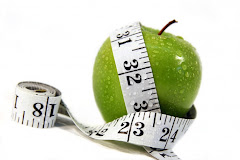OK so after a short holiday I'm back and ready to tackle new and exciting topics collected from the pile of emails! A common exercise but probably one of the least correctly executed is the simple "jog" yep that's rite, most people assume a jog is simply a jog but if not executed correctly there is no end of damage that can be done. So here's a guide for beginner's looking at jogging correctly to ensure your getting the most out of it as well as preventing injury.
...........................
BREAK IN slow, and take it easy. See how you handle fast walking. It takes a few weeks of fast walking to accustom the body to the stress of jogging. Besides, after you have tried race walking you may want to stick with it. Jogging isn't for you if are grossly obese, have back or knee problems, or if you are suffering from a serious heart condition.
After a few weeks of walking fast without injury, you are ready for your first jogging session. After some stretching exercises, walk fast for one minute and then break into a jog for one minute. Do this for 10-15 minutes. Next day, alternate two minutes of jogging with two minutes of fast walking. Do this for 20 minutes. Increase your exercise load by a few minutes every week. Within a few months, you should be able to handle 20 minutes of non-stop jogging every other day. Good posture and technique are vital for staying injury free. The common error is to run slouching or leaning forward. This increases the pressure in the abdomen and interferes with deep breathing. Run upright.
Perhaps the upright running style of the 200 or 400 metre Olympic gold medallist, Michael Johnson, is the one worth most emulating. Swing your arms freely with your elbows slightly flexed. The other common error is to land on the front half of your sole. Jogging is not ballet. Land on your heel first and push off from the ball of your foot with a claw-like movement. Run with your knees high, but not too high. If you are running on soft, even ground, you will not injure yourself with this style.
Hit your Target Heart Rate (THR) and keep going at that pace for about 20 minutes. Calculating your THR is easy. Subtract your age in years from 220. Seventy percent of this number is your THR. Slow down if you are running so fast that you cannot hold a conversation with someone running alongside. The reward for maintaining your THR is the "runners high", a rush of endorphins that bestows feelings of ecstasy, light-headedness, and inner well-being.
Don't stop abruptly after finishing your run. Do some cool-down exercises afterwards. These should include brisk walking of gradually decreasing intensity and stretching exercises, especially for your Achilles' tendon. Don't forget to do cross training on the days when you don't jog. Alternate jogging with cycling, weightlifting or swimming.
Remember, no single exercise is perfect, and doing the same exercise daily overworks some parts of the body while neglecting others. This leads to injuries in the end. Variety is truly the essence of safe and fruitful exercise.
Sunday, January 20, 2008
The correct Jog
Posted by myfitmate at 11:16 PM
Labels: health and fitness, jogging, running, tutorials
Subscribe to:
Post Comments (Atom)











0 Comments:
Post a Comment